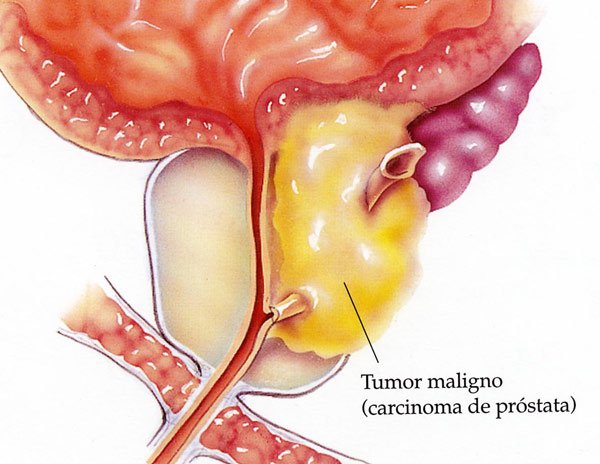Prostate cancer
It is a cancer that starts in the prostate gland. The prostate is a small structure the size of a walnut that is part of the male reproductive system and surrounds the urethra, the tube that carries urine out of the body.
Causes
Prostate cancer is the most common cause of cancer death in men over 75 years old. This type of cancer is rarely found in men under 40 years of age.
People most at risk include:
- Black men, who are also more likely to have this cancer at any age.
- Men over 60 years.
- Men who have a father or brother with prostate cancer.
Other people at risk include:
- Men who have been exposed to Agent Orange.
- Men who consume too much alcohol.
- Farmers.
- Men who eat a diet rich in fat, especially animal.
- Obese men.
- Tire plant workers.
- Painters.
- Men who have been exposed to cadmium.
Prostate cancer is less common in people who do not eat meat (vegetarians).
A common problem in almost all men as they get older is an enlarged prostate, which is called benign prostatic hyperplasia or BPH. This problem does not increase your risk of prostate cancer; however, it can raise the blood test results for prostate specific antigen (PSA, for its acronym in English).
Symptoms
With incipient prostate cancer, often there are no symptoms.
The blood test for prostate specific antigen (PSA) can be done to screen men for prostate cancer. Often, the PSA level rises before it has any symptoms.
The symptoms listed below can occur with prostate cancer, as it grows in the gland. These symptoms can also be caused by other prostate problems:
- Delay or slowness in initiating urination.
- Dribbling or leakage of urine, most often after urinating.
- Slow urine stream.
- Straining when urinating, or not being able to empty all the urine.
- Blood in the urine or semen.
When cancer has spread, there may be bone pain or tenderness, most often in the lower back and pelvic bones.
 Exams and Tests
Exams and Tests
An abnormal rectal examination may be the only sign of prostate cancer.
A biopsy to see if you have prostate cancer is needed. A biopsy is a procedure to remove a sample of tissue from the prostate, which is sent to a laboratory for analysis. This will be done in the doctor’s office.
Your doctor may recommend a biopsy if:
- You have a high level of prostate specific antigen.
- A rectal examination revealed a hard, irregular surface.
The biopsy results are reported using what is called the Gleason grade and score.
The Gleason score indicates how fast the cancer might spread and classifies tumors on a scale of 1 to 5. One can have different degrees of cancer in a biopsy sample. The two most common grades are added together, giving the Gleason score. The higher the Gleason score, the greater the likelihood that the cancer has spread beyond the prostate gland:
- Scores of 2 to 5: Low-grade prostate cancer.
- Scores 6-7: intermediate grade cancer (or half). Most prostate cancers are located in this group.
- Scores of 8 to 10: high grade cancer.
You can do the following tests to determine if the cancer has spread:
- CT
- Bone scan
- MRI
The PSA blood test is also used to monitor your cancer after treatment.

